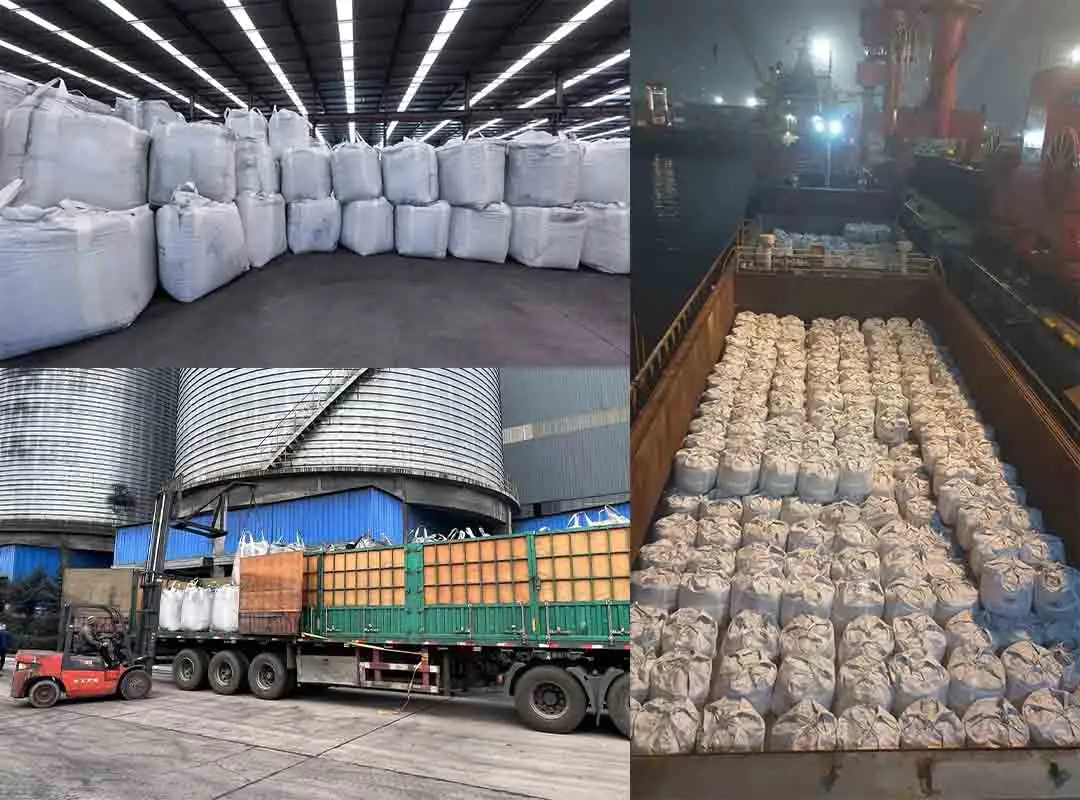Graphite petroleum coke
1.High Carbon Content:
This high carbon content makes it a valuable carbon additive in metallurgical processes.
2.Low Volatile Matter:
This is important for applications where stable carbon content is desired.
3.Low Sulfur Content:
Low sulfur levels are desirable, especially in applications where sulfur could have detrimental effects on the final product.
4.Good Electrical Conductivity:
This feature is crucial in applications where the material is used as an electrode in electric arc furnaces for metal smelting.
5.Thermal Stability
Graphite petroleum coke exhibits good thermal stability, allowing it to withstand high temperatures without significant degradation.
6.Particle Size Distribution:
The particle size distribution of Graphite petroleum coke can be controlled during the manufacturing process.
Production process of graphitized petroleum coke
The production process of graphitized petroleum coke involves several steps. Here's a general overview of the process:
Petroleum Coke Production: Petroleum coke is a byproduct of the refining process in oil refineries. It is produced from heavy petroleum residues by coking or cracking processes. Initially, crude oil is processed in a refinery to extract various products like gasoline, diesel, and jet fuel. The residual oil left after the extraction is subjected to high-temperature coking or cracking, resulting in the formation of petroleum coke.
Calcination: The raw petroleum coke obtained from the refining process contains impurities and volatile components. To remove these impurities and reduce the volatile content, the petroleum coke is subjected to a process called calcination. Calcination involves heating the coke at high temperatures (typically between 1200 to 1400 degrees Celsius) in a controlled environment, such as a rotary kiln or vertical shaft kiln. This process helps to improve the physical and chemical properties of the coke.
Crushing and Sizing: After calcination, the calcined coke is crushed into smaller particles. The coke is typically crushed to a specific size range to meet the requirements of different applications. Crushing is usually done using crushers or mills.
Blending (Optional): Depending on the desired specifications, different batches of calcined coke may be blended together to achieve the desired carbon content and other properties. Blending allows for customization and optimization of the final product.
Graphitization: The crushed and optionally blended coke is then subjected to a graphitization process. Graphitization involves heating the coke to even higher temperatures (usually above 2500 degrees Celsius) in a controlled environment, such as a graphite furnace. This high-temperature treatment transforms the amorphous carbon structure of the coke into a more ordered and crystalline graphite structure. The process helps to increase the carbon content and improve the electrical conductivity and thermal properties of the coke.
Cooling and Packaging: Once the graphitization process is complete, the graphitized petroleum coke is cooled down. It is then packaged in different forms, such as bulk bags, big bags, or smaller bags, depending on the requirements of customers and the intended use of the coke.
It's important to note that the specific details of the production process may vary depending on the manufacturer and the equipment used. Additionally, various quality control measures are implemented throughout the production process to ensure the final product meets the desired specifications and standards.
Specification
Product name | Batch No. | RS2023-09-22 | |
Sampling Site | Workshop | Sample condition | Normal Solid |
Acceptance date | 2023.09.22 | Report date | 2023.09.23 |
Test items | Standard | Test results | |
Appearance | This product should be black solid | Complies | |
Fixed carbon | ≥98.5% | 98.70% | |
Moisture | ≤0.5% | 0.41% | |
ASH | ≤0.8% | 0.63% | |
Sulfur | ≤0.2% | 0.15% | |
Conclusion | Product conforms to specification. | ||
Examination clerk | 王新丽 | Reviewer | 吴亚光 |
Production Line
The graphitized petroleum coke (GPC) production line begins with the selection of high-quality raw petroleum coke, followed by a calcination process to remove volatile components. The material is then crushed, sized, and, if necessary, blended to achieve desired properties. The crucial step is graphitization, involving high-temperature heating in the presence of a catalyst to transform carbon into a crystalline structure. After cooling and additional processing for quality enhancement, the final GPC product undergoes rigorous quality control










